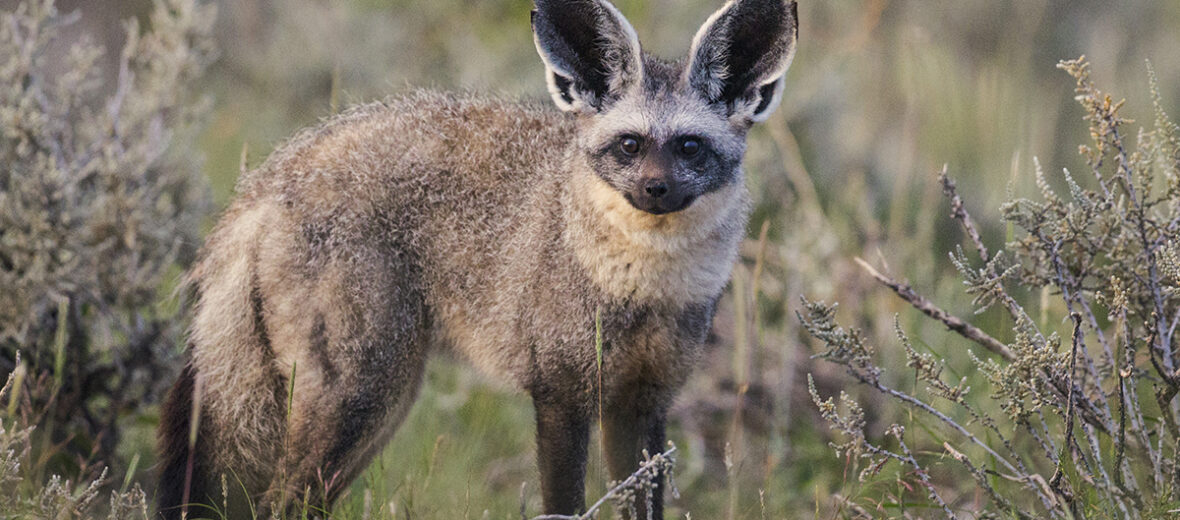
The bat-eared fox is a species of fox found on the African savanna, named for its large ears, which are used for thermoregulation (control of heat) as well as listening for predators and prey. They have changed very little in over 800,000 years! They dig dens where they raise their young and which also provide shelter from the extreme heat and cold, as well as high winds. Fortunately, their numbers are stable and these critters are listed as Least Concern by the IUCN. They are affected though by trapping and climate change.
First the Stats…
Scientific name: Octocyon megalotis
Weight: Up to 12 lbs.
Length: Up to 26 inches, plus up to a 14 inch long tail
Height: Up to 16 inches
Lifespan: Up to 14 years
Now on to the Facts!
1.) Their prime habitat is short-grassy plains and areas with bare ground, but they are also found in arid & semi-arid scrubland and savannas.
2.) Bat-eared foxes are very social animals and can be found in numbers of up to 70 within just a square mile!
3.) Their name is derived from the Greek words “oto/Otis” (ear), “cyon” (dog), and “mega” (big) and translates to dog with big ears.
4.) The bat-eared fox has a favorite food, the harvester termite. They will also eat many other invertebrates. Termites make up 70% of their diet!
5.) The foxes are nocturnal (active at night) omnivores (eat animal and plant matter) but prefer to eat insects, making them primarily insectivores.
But wait, there’s more on the bat-eared fox!
6.) Their claws are ideal for digging. They can create their own burrows or open up an empty one made by another animal. They have even been documented using old termite mounds as dens.
7.) These foxes also eat grasshoppers, spiders, scorpions, millipedes, small rodents, lizards, fruits, eggs, and dung beetles along with their larvae.
Did you know…?
Their ears stand at over 5 inches!
8.) Bat-eared foxes have up to 50 teeth, which is more than normal mammals.
9.) Their sense of hearing is so acute that they can actually hear insects crawling on the ground!
10.) These little foxes can travel up to 8 miles a night looking for food.
But wait, there’s still more on the bat-eared fox!
11.) Cheetahs, jackals, spotted hyenas, rock pythons, African wild dogs, and leopards all prey on these big-eared critters.
12.) Females birth up to 6 kits each breeding season after up to a 75 day gestation (pregnancy).
Now a Short Bat-Eared Fox Video!
Also, check out the Critter Science YouTube channel. Videos added frequently!
Want to suggest a critter for me to write about? Let me know here.



